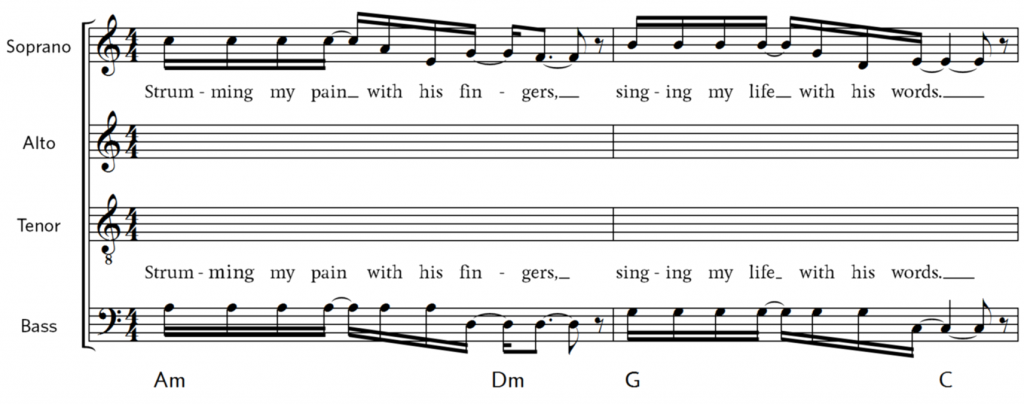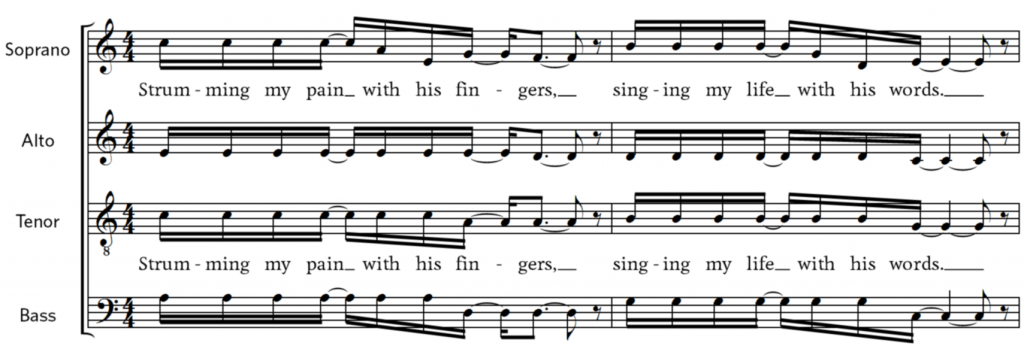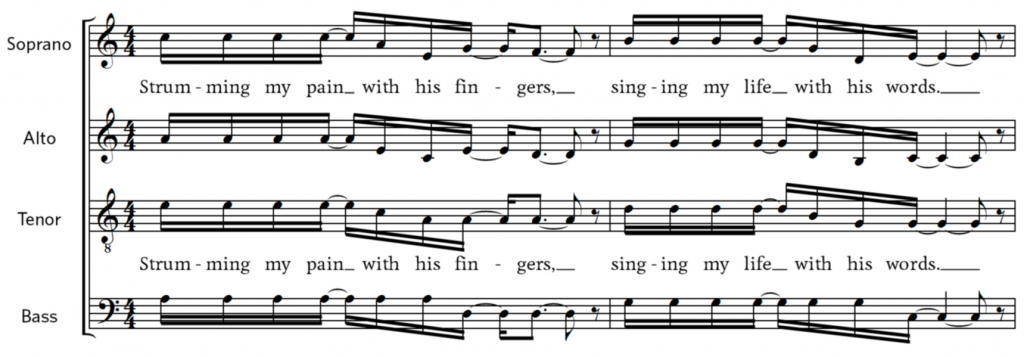 Last week I gave a workshop on arranging and we worked on writing the middle parts in a homophonic score. The song we used was Killing me softly. I had written out the melody in the soprano and a bass line in the bass voice. The instruction was to fill in alto and tenor:
Last week I gave a workshop on arranging and we worked on writing the middle parts in a homophonic score. The song we used was Killing me softly. I had written out the melody in the soprano and a bass line in the bass voice. The instruction was to fill in alto and tenor:

(Maybe, it’s a good idea to do the exercise, before reading on.)
In general, the exercise was done in two ways. Some of the arrangers made the middle voices as simple as possible. They tried to keep the parts on the same notes wherever possible. The result looked something like this:

The alternative way of writing is to let the middle voices move up and down with the melody. Below is an example of this way of writing:

If you play both versions on the piano, you hear no big differences between them. In both versions the harmonies are written in a good way. Both versions simply sound good. But if you sing these notes with a choir you will notice big differences. The second version, with the narrow voices, then sounds better.
The second way of writing has a couple of advantages:
- The alto en tenor parts sound more logical. These are the notes you might choose intuitively, if you would sing harmonies to the melody.
- The range of the alto and tenor is bigger. These now are comparable to the ranges of soprano and bass. Singing this bigger range is more healthy for the vocal technique and the bigger ranges make for more interesting parts.
- The three upper voices now sing with a comparable ‘tension’ and therefore the blend between them will be better.
- In the melody, the higher notes will sound a little louder than the lower ones. If you let the alto and tenor move with the melody, the volume of these voices will be in harmony with the soprano.
- In the second way of writing, there are narrow harmonies between the upper parts, which fit pop and jazz better. Wide harmonies tend to create a more classical sound.
In the workshop, we sang both versions. We agreed that the narrow chords sounded richer and more together. In the first version, the soprano singers felt kind of lost, because they were lacking support by the other voice groups.